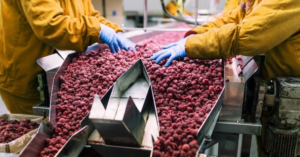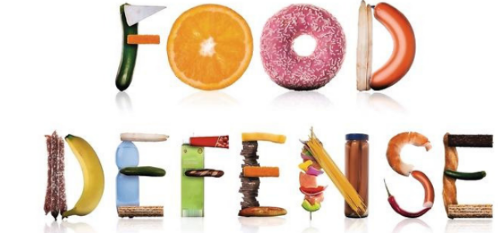In an era of globalization, the world has become a smaller space. It has become easier to travel and transport things from one corner of the world to another. Likewise, the complexity, diversity and dependency on intertwined domestic and global processes continue to grow in the food system. At the same time, there are increasingly possible causes of deliberate adulteration that continue to develop, become more complex, and will simultaneously have a direct effect on public health. So: to prevent, plan, respond to, and recover from acts of deliberate adulteration of the distribution of food, Food Defense became an important part for shielding food businesses and consumers from any potential threat.
Distinguish the difference between Food Security and Food Defense

To protect and prevent food from any adulteration – whether it is intended or not, regulatory requirements have been put into place, which are based on food safety and food defense procedures. In other words, food defense and food safety contribute to the prevention of adulteration. The key difference between these two types of training is that food safety prevents food from unintentional adulteration. Food defense is responsible for protecting and preventing the public from intentional adulteration, which in turn may cause harm to consumers.
What is food defense?

The Food & Drug Administration (FDA) states “Food defense is the effort to protect food from acts of intentional adulteration.” So, more basically stated, it prevents consumers’ health from any physical, chemical, and biological impurities deliberately added to food that could harm the consumers’ health. Due to increasing need for food defense, FDA issued a rule in May 2016 under the Food Safety Modernization Act (FSMA). The main objective of the rule is to prohibit deliberate adulteration of actions designed to cause systemic damage to public health, including acts of terrorism targeted at food sources. Although these actions are unlikely to occur, they could potentially cause disease, death, and economic destruction to the food chain if there are no prevention strategies in place. Additionally, FDA has developed a range of instruments and tools to help food facilities prevent, plan, respond to, and recover from acts of deliberate adulteration of food facilities.
To prepare a correct Food Defense Plan
In accordance with FDA, it is required for both domestic and foreign companies that are registered with FDA as food facility to formulate and execute food defense plan. A Food Defense Plan must include a vulnerability assessment, mitigation strategies, food defense monitoring of the implementation of mitigation strategies, corrective actions, verification procedures, and logs or records. Every three years or where conditions have failed (such as mitigation techniques that are found to be poorly applied) a reanalysis is required. A detailed overview of what needs to be included in a food defense plan is outlined in 21CFR121. This plan will help the facility to find out what precautions one must take to reduce the risk of food items in the facility being tampered with or deliberately poisoned. A food defense plan will strengthen the preparedness of a food processor. These protocols will also enhance the ability to respond efficiently during a crisis, where stress levels are elevated, and reaction time is minimal.
Standardized trainings will be held in August. Please contact us if you would like to participate or if you need an “in company training to suit your needs and train your staff“.




